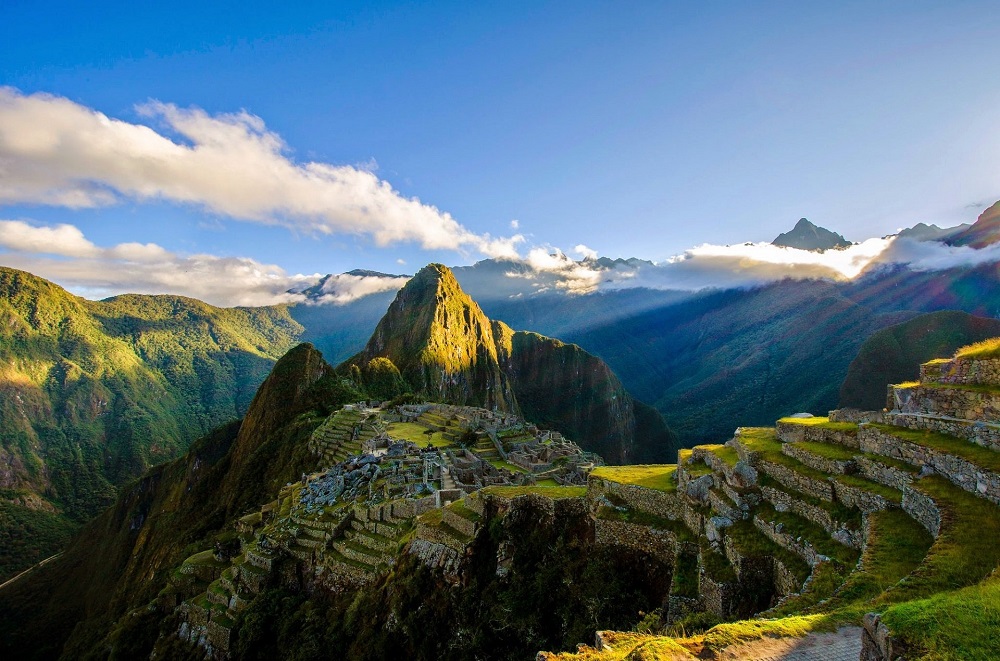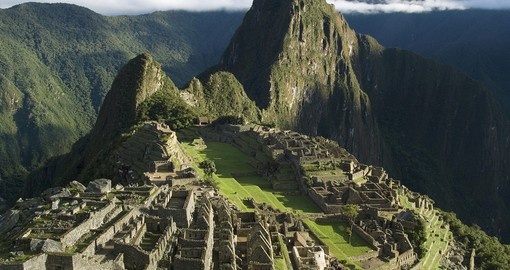Nestled high in the Andes Mountains of Peru, Machu Picchu stands as a testament to the architectural and engineering prowess of the ancient Inca civilization.
While often referred to as Machu Picchu, it's important to note that the entire site is not just one peak but rather a complex of structures and terraces situated on a ridge between two towering peaks, Machu Picchu and Huayna Picchu.
In this article, we will explore the mystical allure of Machu Picchu and specifically explore the breathtaking heights of Machu Picchu Peak.

1.Geographical Context
Machu Picchu Peak is part of a mountainous landscape that characterizes the region. The Andes, the longest mountain range in the world, create a stunning backdrop for this archaeological wonder.
Machu Picchu itself is located at an elevation of approximately 2,430 meters (7,970 feet) above sea level, while Machu Picchu Peak soars even higher, reaching around 3,082 meters (10,111 feet).
2.Historical Significance
Built-in the 15th century by the Inca emperor Pachacuti, Machu Picchu served as a royal estate and religious retreat. The site was abandoned and forgotten for centuries until its rediscovery by American historian and explorer Hiram Bingham in 1911.
The purpose of Machu Picchu Peak within the broader complex is believed to have been both ceremonial and strategic, offering stunning views of the surrounding landscape.
3.Ascending Machu Picchu Peak
While many visitors are drawn to the iconic Machu Picchu itself, an increasing number of adventurers seek the thrill of ascending Machu Picchu Peak. The climb requires a separate ticket and is limited to a specific number of visitors each day to preserve the site.
The journey to the summit is not for the faint of heart, as it involves steep and narrow paths, stone steps, and breathtakingly exposed sections.
The ascent typically takes about 1-2 hours, depending on one's fitness level, and rewards climbers with unparalleled panoramic views of the entire Machu Picchu complex, the Urubamba River valley, and the surrounding peaks of the Andes.
At the top, visitors are greeted with a sense of accomplishment and a unique perspective on the intricate layout of Machu Picchu.
4.Architectural Marvels
Machu Picchu Peak itself is not home to the intricate stone structures that characterize the main archaeological site, but it provides a vantage point to appreciate the meticulous planning and engineering prowess of the Inca civilization.
The agricultural terraces, temples, and residential areas of Machu Picchu below are laid out with precision, aligning with astronomical events and showcasing the advanced knowledge of the Incas in urban planning and architecture.

5.Conservation Challenges
The increasing popularity of Machu Picchu as a global tourist destination has raised conservation concerns. The delicate ecosystem of the region and the ancient structures face challenges from the impact of foot traffic, erosion, and environmental factors.
Strict regulations and visitor limits have been implemented to mitigate these issues, emphasizing the need for sustainable tourism practices to preserve Machu Picchu Peak and its surroundings for future generations.
6.Cultural and Spiritual Significance
For the indigenous Quechua people, who are the descendants of the Inca civilization, Machu Picchu holds profound cultural and spiritual significance.
The site is considered a sacred space, and the surrounding mountains, including Machu Picchu Peak, are believed to be inhabited by protective spirits.
Traditional rituals and ceremonies are still conducted by local communities to honor and connect with the ancient heritage of the Andes.
7.Best Time to Visit
Machu Picchu, with its rich history and stunning landscapes, is a destination that captivates visitors throughout the year. However, choosing the right time to visit Machu Picchu Peak can greatly enhance your overall experience.
Several factors, including weather conditions, crowd levels, and special events, contribute to determining the best time to explore this iconic site.
7.1 Dry Season (May to October)
The dry season, spanning from May to October, is widely considered the best time to visit Machu Picchu Peak. During these months, the weather is relatively stable, with minimal rainfall and clear skies. The temperature is generally mild, making it comfortable for hiking and enjoying the panoramic views from the summit.
May and October mark the beginning and end of the dry season, respectively, offering a balance between favorable weather and fewer crowds.
7.2 Peak Season (June to August)
While the dry season is ideal for weather conditions, it also coincides with the peak tourist season, particularly from June to August. These months attract a higher number of visitors due to summer vacations in the Northern Hemisphere.
If you plan to visit Machu Picchu Peak during this time, it is advisable to book tickets well in advance and consider hiking early in the morning to avoid the crowds.
7.3 Shoulder Seasons (April, September, and early October)
The shoulder seasons just before and after the peak season offer a good compromise between favorable weather and fewer tourists.
April and early October provide pleasant conditions, and you may experience a quieter atmosphere compared to the peak months.
Keep in mind that weather conditions can be somewhat unpredictable during these transitional periods.
7.4 Wet Season (November to March)
The wet season, from November to March, brings higher chances of rainfall and occasional cloud cover. While Machu Picchu is still accessible during this time, the trails can be slippery, and visibility may be reduced.
It's worth noting that February is often the rainiest month. Travelers who choose to visit during the wet season should come prepared with appropriate gear and be flexible with their plans.
7.5 Special Events
Consider planning your visit around special events or cultural festivals. Inti Raymi, the Festival of the Sun, takes place in late June and involves colorful celebrations in Cusco.
Coordinating your visit with such events allows you to immerse yourself in the local culture and traditions.
8.Conclusion
Machu Picchu Peak, while often overshadowed by the fame of the main archaeological site, offers a unique and awe-inspiring experience for those willing to venture to its heights.
The journey to the summit not only provides a physical challenge but also grants visitors a deeper understanding of the ingenuity of the Inca civilization and the breathtaking beauty of the Andean landscape.
As we continue to marvel at the enigmatic allure of Machu Picchu, it is essential to embrace responsible tourism practices to ensure the preservation of this extraordinary cultural and historical treasure.



You must be logged in to post a comment.